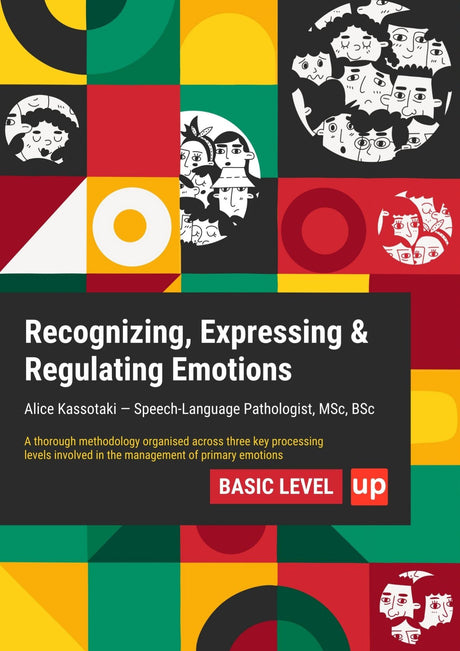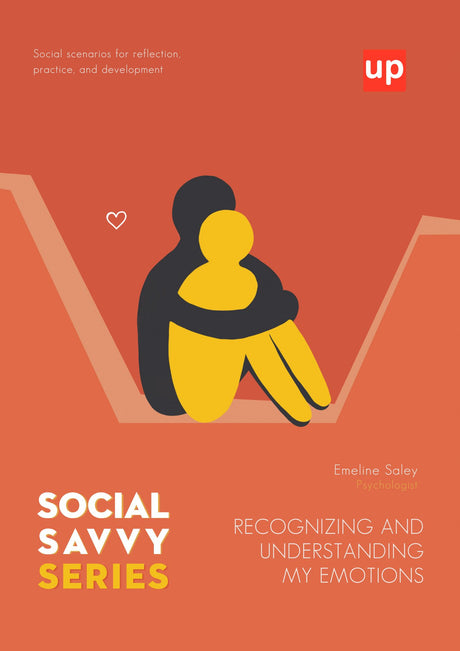Unwanted, intrusive thoughts of a sexual nature can be profoundly distressing, creating a cycle of doubt, shame, and anxiety. When these thoughts become persistent and are followed by compulsive behaviors aimed at neutralizing them, you may be experiencing a specific subtype of Obsessive-Compulsive Disorder (OCD) known as Sexual OCD. This is not a reflection of your character or desires, but a treatable mental health condition. While pop culture and depictions in TV shows often misrepresent OCD as a quirk related to cleanliness, its reality can be far more internal and tormenting. This article serves as an essential guide—a form of "OCD test"—to help you understand the symptoms, differentiate them from other concerns, and explore the most effective solutions for reclaiming your peace of mind.
Key Points
- Sexual OCD involves persistent, unwanted sexual thoughts and compulsive behaviors driven by anxiety and fear, not actual desires or identity confusion.
- Effective treatment, particularly Cognitive-Behavioral Therapy with Exposure and Response Prevention (ERP), can significantly reduce symptoms and improve quality of life.
- Seeking support from qualified mental health professionals and building a strong support network are essential steps toward recovery and long-term management of Sexual OCD.
Sexual OCD Test: Navigating the Distress of Sexual Obsessions

Living with unwanted sexual thoughts can feel isolating and terrifying. These are not fleeting, curious thoughts; they are persistent, distressing, and ego-dystonic—meaning they are the opposite of what you truly believe and value. Many people feel afraid when these intrusive thoughts arise, fearing loss of control or negative consequences related to their sexual identity. The internal battle against these intrusive thoughts can consume your energy, impact your relationships, and diminish your quality of life. The core of this article is to demystify Sexual OCD, provide a structured way to evaluate your experiences, and illuminate the path toward effective treatment and recovery. Understanding this condition is the first, most crucial step toward managing it.
Understanding Sexual OCD: Beyond Superficial Distinctions
Sexual OCD is a specific manifestation of Obsessive-Compulsive Disorder where the obsessions and compulsions are focused on sexual themes. It’s a condition rooted in anxiety and a fear of uncertainty, not in suppressed desires or hidden perversions. Sexual intrusive thoughts are considered common obsessions among individuals with OCD, occurring as intrusive thoughts and compulsive behaviors that are characteristic of various types of OCD. For those who suffer from it, the content of the sexual intrusive thoughts is deeply disturbing precisely because it clashes with their core identity and values. A significant portion of individuals with OCD experience these types of obsessions; one study revealed that sexual obsessions affected 34% of OCD patients.
What is Obsessive-Compulsive Disorder (OCD)?
Obsessive-Compulsive Disorder is a mental health condition characterized by two primary components: obsessions and compulsions. Obsessions are recurrent, unwanted, and intrusive thoughts, images, or urges that cause significant anxiety. Compulsions are repetitive behaviors or mental acts that an individual feels driven to perform in response to an obsession. These compulsive behaviors are designed to reduce the anxiety caused by the obsession or prevent a feared outcome, but the relief is only temporary, reinforcing the cycle. Sexual obsessions are a common symptom of OCD, frequently observed and clinically significant within the disorder. OCD affects a significant portion of the population, with estimates suggesting it impacts approximately 1 in 40 adults in the United States.
Common Misconceptions Regarding Sexual OCD:
A primary misconception is that having sexual intrusive thoughts means you secretly harbor these desires. This is fundamentally incorrect. Individuals with Sexual OCD are repulsed by their thoughts and go to great lengths to avoid them. Another error is confusing Sexual Orientation OCD with a genuine crisis of identity. The former is driven by a fear of uncertainty about one’s Sexual Orientation, while the latter is a natural process of self-discovery. Finally, many believe that OCD compulsions are always external, observable actions. In reality, much of Sexual OCD involves hidden mental compulsions, a subtype often referred to as Pure Obsessional OCD or “Pure O.”
If you are concerned about your symptoms or intrusive thoughts, consider seeking professional guidance for proper diagnosis and support.
The Definitive Sexual OCD "Assessment": A Guided Self-Evaluation

This section is not a formal diagnostic tool but a structured guide for self-reflection. True diagnosis must come from a qualified mental health professional. For meaningful reflection, try to answer the self-evaluation questions as consistent as possible with your actual experiences. Use these questions to better understand your experiences and to prepare for a productive conversation with a therapist.
Part 1: Identifying Your Sexual Obsessions (The "What Ifs")
Obsessions in Sexual OCD are obsessive thoughts—intrusive “what if” questions that generate intense fear and doubt. Consider if you frequently experience persistent and unwanted thoughts related to:
- Sexual Orientation: “What if I’m secretly gay/straight/bisexual?” This is the hallmark of Sexual Orientation OCD, sometimes called Gay OCD or HOCD. The fear is not about a specific orientation but the terrifying uncertainty of not knowing for sure.
- Inappropriate Targets: “What if I’m attracted to children, family members, or religious figures?” These thoughts are horrific to the sufferer because they violate their deepest moral codes.
- Aggressive Sexual Acts: “What if I lose control and sexually harm someone?” This fear is about acting out a violent or taboo impulse.
- Personal Identity: “What if these thoughts mean I’m a bad, immoral, or dangerous person?” The obsession attaches to your sense of self.
Part 2: Recognizing Your Compulsions (The "To-Dos")
Compulsions are the actions you take to “prove” the obsessions are false or to reduce the anxiety they cause. They can be overt or purely mental.
- Mental Checking: Do you mentally review past experiences, feelings, or attractions to “check” your sexual orientation or prove you’ve never had an inappropriate thought?
- Reassurance-Seeking Behaviors: Do you repeatedly ask others (or yourself) if you seem gay/straight, or if you’re a good person? Do you excessively research symptoms online for certainty?
- Avoidance: Do you avoid people, places, or media (movies, TV shows) that might trigger your obsessions? For example, avoiding situations such as avoiding children if you have pedophilic obsessions or avoiding same-sex friends if you have sexual orientation fears.
- Testing: Do you expose yourself to triggering material (e.g., looking at images) to “test” your physical or emotional reaction, often monitoring your sexual organs for any sign of genital arousal?
- Ritualistic Behaviors: Do you engage in ritualized behaviors like praying, repeating phrases, or neutralizing a “bad” thought with a “good” one to cancel it out? For example, do you repeat certain actions, such as turning off light switches multiple times, as part of your compulsions?
Part 3: Assessing the Impact (The "Severity")
The final component of this self-evaluation is assessing how these obsessions and compulsions affect your life.
- Time: In the last month, how much time per day have you spent consumed by these thoughts or performing compulsions? Is it more than an hour?
- Distress: How much anxiety, guilt, or depression do these experiences cause you on a scale of 1 to 10?
- Impairment: Have these obsessions and compulsions interfered with your work, social life, relationships, or ability to function day-to-day?
Beyond the "Assessment": Differentiating Sexual OCD from Related Concerns

Understanding the nuances between Sexual OCD and other experiences is critical for clarity and seeking the right help.
Sexual obsessions in OCD are distinct from other types of unacceptable thoughts, such as religious or violent obsessions.
Sexual Orientation OCD vs. Genuine Identity Exploration:
Genuine exploration of Sexual Orientation is typically characterized by curiosity, openness, and a sense of discovering one’s authentic self, even if it brings confusion. Sexual Orientation OCD, in contrast, is characterized by terror, dread, and a desperate need for 100% certainty. The focus is not on genuine attraction but on escaping the anxiety of the “what if” question. Sexual Orientation OCD can affect individuals of any gender. A person exploring their identity might feel excitement or connection, while someone with SO-OCD feels panic and revulsion.
Sexual Intrusive Thoughts vs. Normative Intrusive Thoughts:
Nearly everyone experiences occasional, bizarre, or inappropriate unpleasant thoughts, also known as intrusive thoughts. The difference lies in the reaction. A person without OCD might dismiss a strange thought as “weird” and move on. A person with OCD latches onto the thought, assigning it immense significance and danger. They believe the thought says something profound about their character, leading to the debilitating cycle of obsessions and compulsions.
Genital Arousal and Misinterpretation:
A particularly confusing aspect of Sexual OCD is the experience of feeling sexually aroused in response to an intrusive thought. This is known as a Groinal Response. It is a purely physiological reaction and does not indicate desire or intent. The brain and body can respond to any sexual stimuli, even unwanted ones. For someone with Sexual OCD, this sexual arousal is misinterpreted as “proof” that their fears are real, which intensifies the panic and fuels the compulsive need to check and seek reassurance.
Etiology of Sexual OCD: Unpacking the Foundational Factors
Sexual OCD, like all forms of obsessive compulsive disorder, is not caused by a single factor but is believed to result from a combination of neurobiological, psychological, and environmental influences.
OCD is classified among mental disorders in diagnostic manuals such as the DSM-5.
The Neurobiology and Psychology of OCD:
Research suggests that OCD involves issues with communication between different parts of the brain, particularly the orbitofrontal cortex, the anterior cingulate cortex, and the striatum. The brain chemistry involved often relates to neurotransmitters like serotonin. These brain circuits are responsible for filtering thoughts, making decisions, and shifting attention. In OCD, this filtering system can become “stuck,” causing intrusive thoughts to loop relentlessly.
Understanding these brain mechanisms can help tailor treatment approaches to the unique needs of each patient.
The Role of Anxiety and Fear:
At its core, OCD is an anxiety disorder. The obsessions are fueled by a catastrophic misinterpretation of a thought as a genuine threat, often accompanied by a fear of losing control over one's thoughts, feelings, or behaviors. This triggers the body’s fear response, and the compulsions are a desperate attempt to regain a sense of safety and control over that perceived threat.
Cognitive Vulnerabilities:
Certain thinking patterns can make a person more vulnerable to OCD. These include:
- Thought-Action Fusion: The belief that thinking a thought is morally equivalent to doing it.
- Inflated Responsibility: An exaggerated belief in one’s responsibility to prevent harm.
- Perfectionism: The need for absolute certainty and an intolerance for doubt.
- Worry: Excessive and distressing concern about one's thoughts or sexual orientation, which can drive obsessive thinking and compulsive behaviors.
Achieving Relief: Efficacious Strategies for Sexual OCD

Recovery from Sexual OCD is absolutely possible with the right therapeutic approach. The goal is not to eliminate intrusive thoughts entirely, but to change your relationship with them so they no longer cause distress or trigger compulsions, which are often attempts to get rid of the anxiety caused by these thoughts.
The Gold Standard: Cognitive-Behavioral Therapy (CBT)
Cognitive-Behavioral Therapy is a highly effective framework for treating OCD. The most crucial component of CBT for OCD is a specific type of Behavior Therapy called Exposure and Response Prevention (ERP). In ERP, a therapist guides you to gradually and safely confront the thoughts, images, and situations that trigger your obsessions (Exposure) while resisting the urge to perform compulsions (Response Prevention). This process retrains your brain to learn that the feared outcomes do not occur and that you can tolerate the anxiety without needing rituals. ERP has been shown to result in significant symptom reduction for 60-70% of patients.
Additionally, test results from standardized assessments can help track progress in therapy.
Complementary Therapeutic Modalities:
Other treatment options can supplement ERP. Acceptance and Commitment Therapy (ACT) helps individuals accept their thoughts without judgment and commit to value-driven actions. Mindfulness practices can also be beneficial in learning to observe thoughts non-reactively. Therapy can further assist individuals in reframing what a sexual image means to them, reducing the impact of these thoughts and interpretations. In some cases, medication, particularly Selective Serotonin Reuptake Inhibitors (SSRIs), may be prescribed to help manage anxiety and obsessive thinking, making therapy more effective.
Conclusion
Sexual OCD can feel like a prison built from your own thoughts. It hijacks your sense of self and fills you with shame and fear. However, it is essential to remember that you are not your thoughts. This condition is a neurological misfiring, not a moral failing. By understanding its mechanisms, recognizing the symptoms through guided self-evaluation, and committing to evidence-based treatment like Exposure and Response Prevention, you can break the cycle. The most critical step is reaching out to a qualified mental health professional who specializes in OCD. Reclaiming your mental peace and living a life free from the grips of obsessive fear is not just a possibility—it is an achievable reality.
Frequently Asked Questions (FAQ)
What is Sexual OCD and how is it different from other types of OCD?
Sexual OCD is a subtype of Obsessive-Compulsive Disorder characterized by persistent, unwanted sexual thoughts and compulsive behaviors driven by anxiety and fear. Unlike other OCD types, the obsessions focus specifically on sexual themes, often causing distress because they conflict with the individual's core values and identity.
Can Sexual OCD be mistaken for doubts about sexual orientation?
Yes, Sexual Orientation OCD (SO-OCD) is a form of Sexual OCD where the person experiences intrusive doubts and fears about their sexual orientation. This differs from genuine identity exploration because SO-OCD is driven by anxiety and the need for certainty, rather than curiosity or self-discovery.
What are common compulsions associated with Sexual OCD?
Common compulsions include mental checking, reassurance-seeking, avoidance of triggers, testing reactions to sexual stimuli, and ritualistic behaviors such as repeating phrases or actions to neutralize intrusive thoughts.
How is Sexual OCD diagnosed?
Diagnosis is made by mental health professionals through comprehensive psychological assessments, including clinical interviews and standardized scales like the Yale-Brown Obsessive Compulsive Scale (Y-BOCS). Self-assessment tools can help prepare for diagnosis but are not substitutes for professional evaluation.
What treatment options are effective for Sexual OCD?
The most effective treatment is Cognitive-Behavioral Therapy (CBT), particularly Exposure and Response Prevention (ERP), which helps patients confront intrusive thoughts without engaging in compulsions. Additional therapies like Acceptance and Commitment Therapy (ACT) and medication, such as SSRIs, may also be recommended.
Is sexual arousal during intrusive thoughts a sign of actual desire?
No. Sexual arousal in response to intrusive thoughts, known as the Groinal Response, is a physiological reaction that does not indicate desire or intent. It is often misinterpreted by those with Sexual OCD, which can increase anxiety and compulsive behaviors.
When should someone seek professional help for Sexual OCD?
If unwanted sexual thoughts and compulsive behaviors cause significant distress, consume substantial time daily, or interfere with functioning in work, relationships, or social life, it is important to consult a qualified mental health professional specializing in OCD.
Can Sexual OCD symptoms be managed long-term?
Yes. With appropriate treatment and ongoing self-care, individuals can learn to manage symptoms effectively, reduce distress, and maintain a fulfilling life. Relapses can occur but can be managed with the skills learned in therapy and support networks.
Original content from the Upbility writing team. Reproducing this article, in whole or in part, without credit to the publisher is prohibited.
References
- Abramowitz, J. S., Deacon, B. J., & Whiteside, S. P. (2010). The Dimensional Obsessive-Compulsive Scale (DOCS): Development and validation of a multidimensional measure of obsessive-compulsive symptoms. Psychological Assessment, 22(2), 180–198. https://doi.org/10.1037/a0018260
- American Psychiatric Association. (2013). Diagnostic and Statistical Manual of Mental Disorders (5th ed.). Arlington, VA: American Psychiatric Publishing.
- Foa, E. B., Huppert, J. D., Leiberg, S., Langner, R., Kichic, R., Hajcak, G., & Salkovskis, P. M. (2002). The Obsessive-Compulsive Inventory: Development and validation of a short version. Psychological Assessment, 14(4), 485–496. https://doi.org/10.1037/1040-3590.14.4.485
- Grant, J. E., Pinto, A., Gunnip, L., Mancebo, M. C., Eisen, J. L., & Rasmussen, S. A. (2006). Clinical features of obsessive-compulsive disorder with sexual obsessions. Journal of Clinical Psychiatry, 67(2), 215–220. https://doi.org/10.4088/jcp.v67n0210
- Lovibond, S. H., & Lovibond, P. F. (1995). Manual for the Depression Anxiety Stress Scales (2nd ed.). Sydney, Australia: Psychology Foundation.
- Smith, E. R., Wetterneck, C. T., Short, M. A., Hart, J., & Little, T. (2011). Development of a sexually intrusive thoughts scale for obsessive-compulsive disorder. Journal of Obsessive-Compulsive and Related Disorders, 1(3), 151–160. https://doi.org/10.1016/j.jocrd.2011.03.003
- Williams, M. T., & Farris, S. G. (2011). Sexual orientation obsessions in obsessive-compulsive disorder: Prevalence and correlates. Journal of Anxiety Disorders, 25(7), 924–931. https://doi.org/10.1016/j.janxdis.2011.05.004
- Yale-Brown Obsessive Compulsive Scale (Y-BOCS). (1989). Goodman, W. K., Price, L. H., Rasmussen, S. A., et al. Archives of General Psychiatry, 46(11), 1006–1011.
- International OCD Foundation. (n.d.). Sexual Orientation OCD. Retrieved from https://iocdf.org/about-ocd/types-of-ocd/sexual-orientation-ocd/
- National Institute of Mental Health. (n.d.). Obsessive-Compulsive Disorder. Retrieved from https://www.nimh.nih.gov/health/topics/obsessive-compulsive-disorder-ocd
- Nova Southeastern University. (n.d.). Obsessive-Compulsive Disorder Research. Retrieved from https://www.nova.edu/









